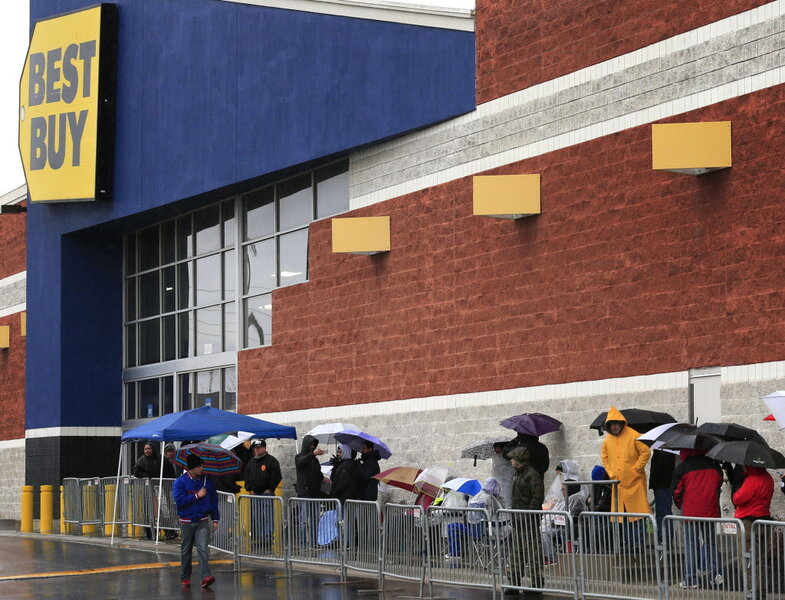A guide to buying refurbished technology
Loading...
Refurbished items usually mean great deals, with significant discounts off a product's retail price. But it can be difficult to figure out just what "refurbished" means — no uniform standard exists for the term — which makes it hard to tell when refurbished goods are deals or duds.
To help you snag the best bargains possible, we'll walk you through the terms you're likely to run into when you buy refurbished, used, or anything that's not brand new, so you can make an informed buying decision.
Why Would a Product Be Marked as Refurbished (Or Not New)?
When you see a product on store shelves marked as refurbished, one of the tough parts about deciding whether to buy it is that you just don't know why it has that refurbished label. However, with electronics, specifically, it comes down to the simple fact that any devices that customers return can no longer be sold as new. Here are some types of items that a retailer might sell as something other than new.
- Items damaged in shipping that may be scuffed, scratched, or cracked
- Items used to demo products in the store or at an event
- Items that were originally leased or rented
- "Open box" items that may have been returned without being used
- Defective or damaged items that have been repaired in some way (more on this later)
Products not marked as new aren't necessarily broken or low in quality — they've probably just been returned (sometimes without the box even being opened), taken minor damage in shipping, or been damaged and then repaired. These items can be just as good as new — and save you a bundle.
What Types of Not-New Items Are There?
You might see a variety of terms used to describe goods that aren't brand new. Here are the ones you should be familiar with when shopping.
- Used items are just that: They've been previously used. These items may show wear to some degree (and you'll want to carefully check their condition before you buy) and have typically not been repaired.
- Refurbished items have been cleaned, repaired, and inspected to ensure they're in like-new condition. However, "refurbished" can mean different things to different retailers — the product may have been refurbished by the original manufacturer or simply fixed up by the retailer itself — so read the fine print and know what you're buying.
- Factory refurbished items have been sent back to the manufacturer to be repaired. They have been restored to like-new condition by the original manufacturer, tested just like a brand-new item, and often come with a full warranty.
- Certified refurbished items are simply refurbished items that are certified by some source. The source may be the original manufacturer — for example, you can buy Apple certified refurbished products or Samsung certified refurbished products — in which case it is likely also a factory refurbished item. However, the product may also be certified by a third party (for example, Best Buy's Geek Squad offers its own certified refurbished products).
- Open box items have been returned by consumers, but in the vast majority of cases are not defective, or necessarily even used. Perhaps the customers changed their minds, but the items can no longer be sold as new. Though the taped-up boxes you may see on store shelves can be intimidating, these may well be brand-new items that are still covered by the original warranty.
When you're buying anything other than new, it's important to know just what you're getting, so pay attention to exactly how the item is marked. You don't want to pick up a refurbished item that was polished up by a local retailer and resold — possibly without a warranty or the ability to return it — without it actually working.
What's the Risk of Buying Refurbished Items?
While used, refurbished, and open box items can offer great deals, they can also be a risk. Used or open box items may not function as you expect — and may have unfriendly return policies and lack warranties. Refurbished items, especially if they haven't been refurbished by a reputable source, may never have been properly repaired or tested. Even though most refurbished goods are perfectly fine, you can always wind up with a lemon.
What Should I Look for in Refurbished Goods?
With smart shopping, you can get the good prices of a refurbished item and also have like-new security in your purchase. Here are the questions to ask yourself:
- Who refurbished the item? This is the most important question when buying refurbished, because you're counting on the refurbisher's reputation to ensure you're getting a quality product.
- What's the warranty? An open box or factory refurbished item may have a warranty that's as good as one for a new product. (Your credit card could get you an extended warranty, too.) Watch out for products without a warranty or with an extremely limited one, as this can lead to trouble if you have a problem later.
- What's the return policy? If the item is being sold as is and you can't return it, if you do run into a problem you can't go back to the retailer with it. For items you can't return, carefully consider whether the deal offered is worth the risk that the item could stop working tomorrow.
Speaking of risks, don't buy used (rather than refurbished or open box) products unless they have a warranty of some sort, and you're willing to take a chance on them. They may be fine, but they may have problems that aren't immediately obvious.
In the end, if you use caution, you can enjoy (nearly) new gadgets at deep-discount refurbished prices.
This article first appeared at DealNews.







